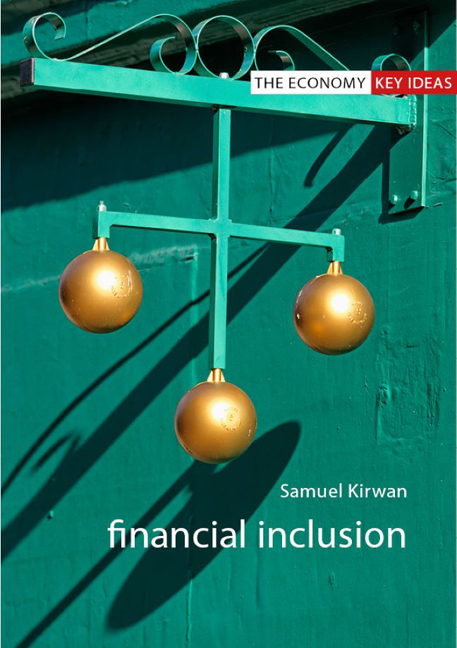Book contents
- Frontmatter
- Contents
- 1 Introduction
- 2 What is financial inclusion?
- 3 Financial inclusion as a tool of poverty eradication: the case of microcredit
- 4 Financial inclusion as the production of new markets: the case of reverse redlining
- 5 Financial inclusion as financial subjectivity: the case of financial capability in the UK
- 6 Financial inclusion as political project: the case of conditional cash transfers
- 7 Financial inclusion as transformations in financial practice: the case of mobile money
- 8 Conclusion
- References
- Index
7 - Financial inclusion as transformations in financial practice: the case of mobile money
Published online by Cambridge University Press: 21 December 2023
- Frontmatter
- Contents
- 1 Introduction
- 2 What is financial inclusion?
- 3 Financial inclusion as a tool of poverty eradication: the case of microcredit
- 4 Financial inclusion as the production of new markets: the case of reverse redlining
- 5 Financial inclusion as financial subjectivity: the case of financial capability in the UK
- 6 Financial inclusion as political project: the case of conditional cash transfers
- 7 Financial inclusion as transformations in financial practice: the case of mobile money
- 8 Conclusion
- References
- Index
Summary
In previous chapters I explored various ways in which financial inclusion has been promoted and facilitated by states, NGOs and financial institutions. Each chapter worked through the programmes and interventions that composed financial inclusion strategies in specific domains, noting in each case how these were directed and shaped at some distance from users’ needs and practices. In contrast to these top-down images, this chapter explores the case of mobile money, often presented not only as the clearest success story of financial inclusion in the 2010s, but also of how transformations in financial practices can be driven by the creativity and innovation of hard-to-reach communities and individuals themselves.
Mobile money thus presents a distinct strand of financial inclusion. It provides, perhaps, the clearest and most striking story of communities who had no previous access to banking services being drawn into the formal financial sector. Yet these considerable achievements are inextricable from broader changes in how these communities related to and used money. The story of mobile money can be characterized as one of uncontrolled financial inclusion, where change is driven by communities’ reinterpreting and repurposing technologies to meet their existing financial needs.
Mobile money: overview
Mobile money has been widely celebrated as a tool of financial inclusion for a number of reasons (see, variously, Smith et al. 2011; Riley & Kalathunga 2019; Ndung’u 2017). It enables inexpensive, prompt and smooth payments and transfers across broad geographic distances (Hughes & Lonie 2007; Gosavi 2017), specifically in rural communities where the reach of the formal sector is poor (Duncombe 2009). It brings users into contact with a broader array of financial services and financial education programmes – opportunities that continue to broaden as mobile money practices switch to smartphone-based systems. More broadly, mobile banking has been held to promise a complete reorientation of banking and payment systems in the Global South; free of the heavy infrastructures of retail banking, it is better able to support the small-scale, low-value transactions that suit rural communities (Kendall et al. 2012: 62; CGAP 2009: 11– 24). Indeed, as an entirely new payments system, it promises an entire reorientation of the world economy (Kendall et al. 2012).
- Type
- Chapter
- Information
- Financial Inclusion , pp. 85 - 98Publisher: Agenda PublishingPrint publication year: 2021

